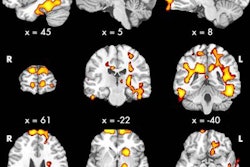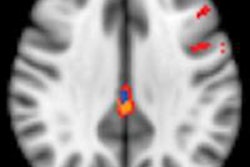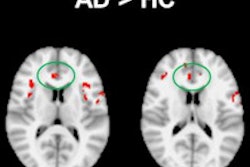Researchers at Harvard Medical School used arterial spin labeling functional MRI (ASL-MRI) to show for the first time that brain connectivity in patients with discogenic chronic low back pain caused by derangement of an intervertebral disk changes in proportion to the severity of their pain.
The findings were presented on February 24 at the American Academy of Pain Medicine annual meeting by Marco Loggia, PhD, postdoctoral research fellow at Harvard, Massachusetts General Hospital, and Brigham and Women's Hospital in Boston.
Arterial spin labeling was used in the study to measure cerebral blood flow to specific brain regions and compare the neural activity of 17 patients with chronic low back pain to that of 16 healthy control subjects.
All 33 patients received two six-minute ASL scans while in a resting state. One MRI exam was done at baseline, while the second scan was performed after the subjects participated in movements, such as straight leg raising and pelvic tilts, that were painful for the back pain group, but not painful for the healthy participants.
ASL images at baseline for patients with chronic low back pain showed a stronger connectivity between the medial prefrontal cortex of the brain and a network of brain areas known as the default mode network, compared with the healthy group.
Results also showed that the back pain patients experienced less pain when there was a greater connection between the default mode network and the medial prefrontal cortex, which, the authors noted, suggests that the connection may be a pain-protective mechanism.
In addition, the ASL images showed that the connectivity between the medial prefrontal cortex and the default mode network decreased after the assigned movements in back pain patients, but not in the control subjects.
"Since painful maneuvers disrupt these connectivity patterns, we believe that the higher connectivity strength observed at baseline might reflect some type of a coping or compensatory mechanism, as if the patients, while at rest, are bracing for the next pain increase," the authors wrote.


.fFmgij6Hin.png?auto=compress%2Cformat&fit=crop&h=100&q=70&w=100)





.fFmgij6Hin.png?auto=compress%2Cformat&fit=crop&h=167&q=70&w=250)











